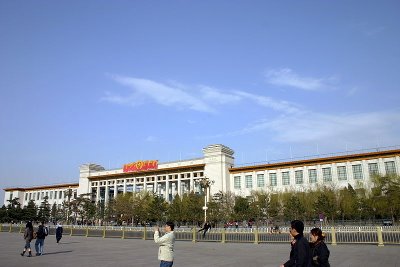The National Museum of China reopened in March after almost four years of construction and over $380 million in renovations. Curated by the Ministry of Culture and the People’s Republic of China, the museum is located in Beijing, next to Tiananmen Square, and was designed to combine elements of the former Museum of Chinese History and the Museum of the Chinese Revolution. However, the renovated building includes more than just shiny new floors and a sleek infrastructure. Many of the new installations were designed with the environment in mind.
According to CNTV, the new museum features advanced eco-friendly technology. A radiant floor heating system ensures air temperature control is warmest at the lowest floor of the building with the most foot traffic, while the upper levels are left cool to save energy. The museum also features a 25,000-square-foot green roof, which can collect 700 cubic meters of rainwater, as well as an air conditioning system that uses smart technology to optimize efficiency. In addition, an innovative ice-storage process preserves thermal energy during off-peak hours in order to cool the building during the daytime.

The National Museum of China isn’t the first museum to adopt sustainable practices and implement environmentally friendly construction. LEED (Leadership in Energy and Environmental Design) certification verifies that buildings are built to make a minimal environmental impact. Criteria include energy efficiency, emissions reduction and indoor environmental quality. The Whatcom Museum in Bellingham, Washington, includes a LEED-certified building constructed with native wood and 180 by 37 feet of solar panel technology. The Children’s Discovery Museum in Normal, Illinois, also earned LEED certification for recycling construction materials, utilizing energy-efficient temperature control and encouraging employees to ride their bikes to work by providing showers and locker rooms.
Museums conserve culture, history, art, and science. Why shouldn’t they conserve the environment as well? Because museums play an obvious role in the tourism industry, they have an equally important responsibility to promote environmentally responsible practices for both international and local visitors. As Senior Vice President Betty Arenth of the Senator John Heinz History Center in Pittsburgh, Pennsylvania, notes: “We’re a history organization. Think about it: It’s preservation of the environment for the future.”
Read Ethical Traveler's Reprint Policy.
